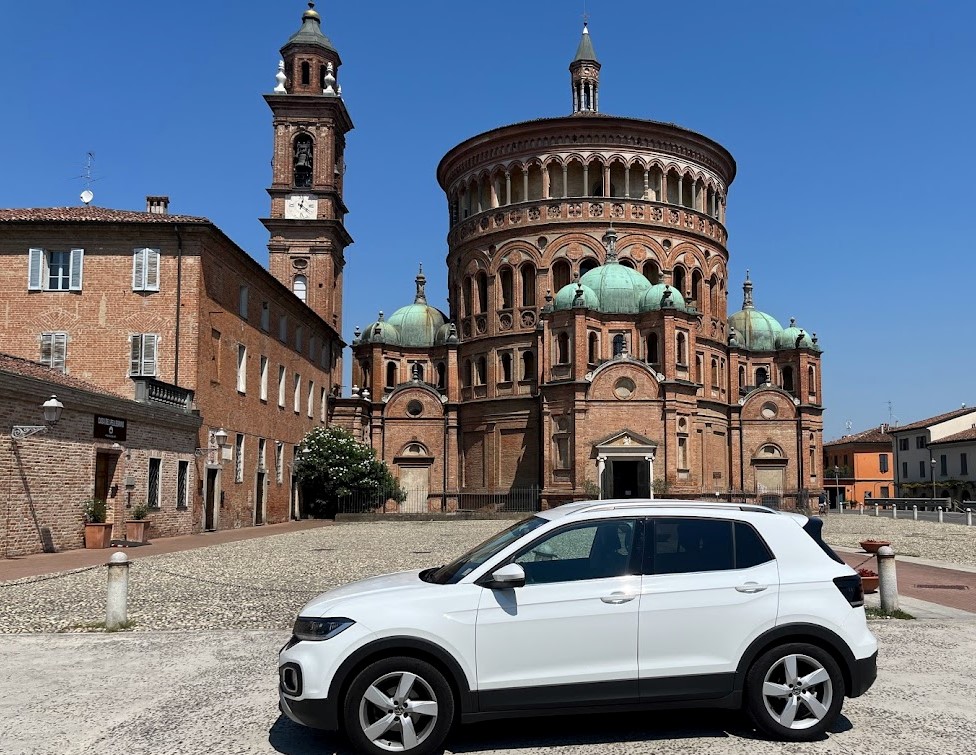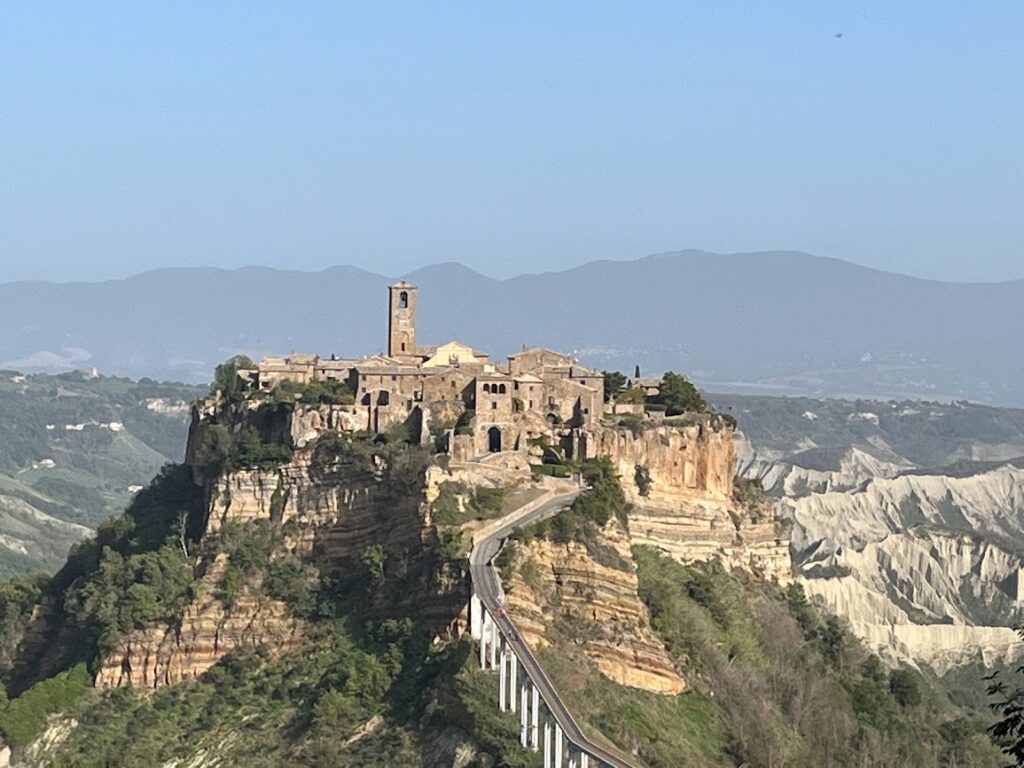Civita di Bagnoregio, also called "The dying city", is one of the list of the most beautiful villages in Italy, "I borghi piu belli d'Italia."
Content in this i denne article
Civita di Bagnoregio in 20 seconds
The atmosphere and location make Civita Bagnoregio a popular tourist destination. It costs 5.00 euros to visit the city.
Enjoy the view on the road to Civita Bagnoregio and from inside the village, which exudes a medieval atmosphere.
Civita di Bagnoregio is located in Lazio

Holiday in Civita di Bagnoregio
The village is quite secluded in a valley in Viterbo but only about an hour’s drive north of Rome, making it the perfect destination for a day trip when you’re in the capital.
Whether you’re coming from the north or the south, you must get off at Orvieto, which is approximately 20 minutes’ drive from Civita di Bagnoregio.
From here you must go to Castiglione Teverina and continue towards Bagnoregio and subsequently towards Civita di Bagnoregio
You can only get to Civita di Bagnoregio via a bridge that, until recently, could only be crossed on foot.
However, it is now possible to cross the bridge by bicycle and motorbike. The car park is a few hundred meters from the bridge and note that it goes uphill on the last stretch to village.

Fiumcino Airport in Rome is the nearest airport. Civita di Bagnoregio is approximately 150 kilometers from the airport. You can either go by car or take the train to Roma Termini station. Get on the train to Oriveto and continue from there by bus.
The airport in Pisa is also an option, but from here you have 260 kilometers drive to the village. Alternatively, you can take a train to Florence, and there change train to Orvieto.

We have a partnership with Trenitalia that makes it simple and easy for you to buy your train ticket online.
All you have to do is buy the ticket, get on the train and present the ticket with the QR code to the train conductor.
You can take the train to Viterbo or Orvieto. From here there are daily buses with the Cotral company, which run at least once an hour.
A little story from a long-lost time: We were in Orvieto, on a Sunday, visiting Civita di Bagnoregio. We asked at the tourist office where we could find the buses to the village and were told they were closed because it was Sunday.
A bit special, but one of the reasons why we love Italy.

Booking.com has an amazing variety of stunning hotels in Civita di Bagnoregio
We recommend early booking if your aim os to secure a great hotel for your holiday.
Booking.com is our choice when it comes to choosing and booking your stay in Italy. It’s super easy and it comes with some great advantages
The atmosphere and location make Civita Bagnoregio a popular tourist destination. It costs 5.00 euros to visit the city.
Enjoy the view on the road to Civita Bagnoregio and from inside the village, which exudes a medieval atmosphere.
The popular village with 11 inhabitants was visited by more than 1 million tourists in 2019.
There is no doubt about the village’s great appeal because there are more hotels and restaurants than there are inhabitants.

It was the writer, Bonaventura Tecchi, who gave Civita di Bagnoregio the name “The Dying City”. Visit it now before it dies (which must never happen and never will!).
The small village is located on a plateau 448 meters above sea level. It is idyllically and not least incredibly beautifully situated in the Valle dei Calanchi valley.
When you walk on the bridge, Porta Santa Maria, you are above the valley, which almost opens at your feet, and which, on the other side of the bridge, reveals itself before Civita di Bagnoregio.
Strong words that are used to describe the village and no wonder! It is breathtaking to look at it from a distance.
The light is different from hour to hour, so try to be here in the morning or when sun sets.
At that time, you can see the red houses light up. Scenes that you cannot see in many other places in the world. Maybe nowhere else?!
The village was occupied already in the Stone Age and was then surrounded by two rivers and lush vegetation. The Etruscans also lived there at that time and together they created a large and important road network which connected this hinterland with the coast.
The village was dominated for several centuries by many different civilizations, including Romans, Visigoths, Goths, Byzantines and Longobards.
There was immense grandeur until an earthquake struck the area in 1695, causing massive landslides and collapses that destroyed the only access road.
It was replaced by the bridge we know today. And when you look beyond the panorama, you will understand what happened, and imagine what it was like in the Stone Age.
This is of course a page about travel and inspiration, but I still think it is interesting to know what is going to happen to the village. because the name “the dying city” is not hot air.
The village’s fate dates to the earthquake from the seventeenth century, when several houses lost their battle against nature.
There are constant landslides under the village, small ones though, but every year soil disappears from the village, and it cannot sustain that in the long run.
Every year, the tourists take 30 centimeters of soil with them from the village, which is a lot, and therefore the question is if the village can host all those tourists. More than 10,000 visitors a day.
There is something completely unique about the village, which is why it is also trying to get on the UNESCO World Heritage List, and it surprises me that it has not already made it.
Civita UNESCO is behind the attempt and has submitted 250 pages to UNESCO in the hope of getting the village on the World Heritage List.
The same organization works to promote tourism in other villages in this area. If it succeeds in getting the village on the UNESCO World Heritage List, this will be an example for other villages in Italy to flourish again through tourism.

Contact us
E-mail:
info@rejsertilitalien.dk
Italiavia
At Italiavia we take pride in presenting and informing about our knowledge of Italy. Our love to this amazing country has no limits.